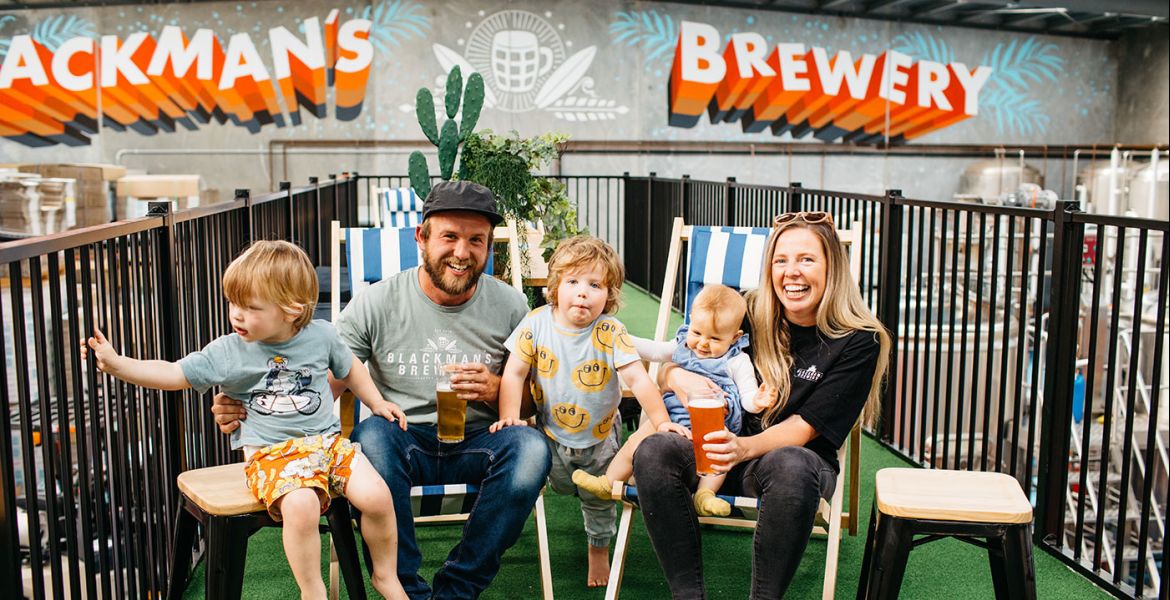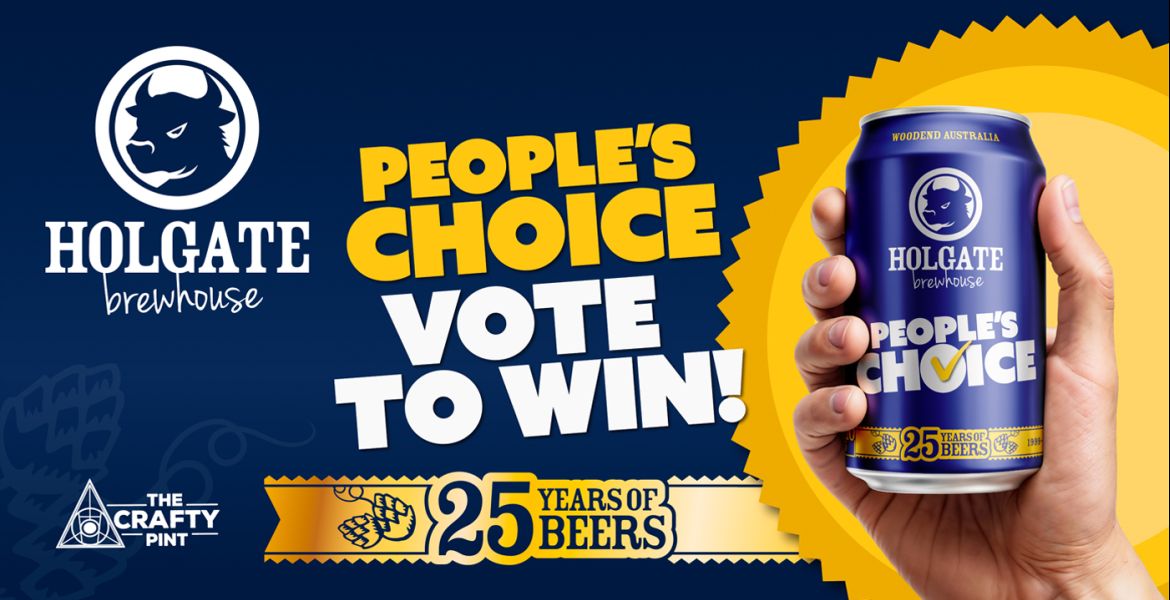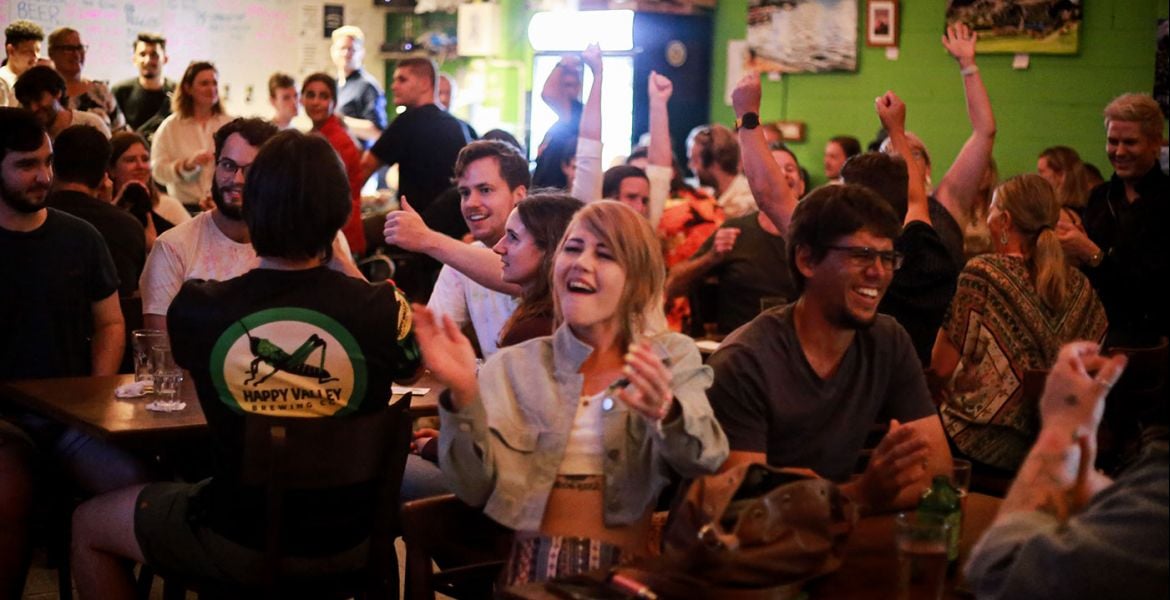Around this time last year, we marked the tenth anniversaries of two of Victoria's longest established microbreweries, Red Hill and Bridge Road Brewers. Today, it's the turn of one just a short drive along The Great Alpine Road from Bridge Road to celebrate its first decade in operation.
Bright Brewery is doing it in style too, choosing the day to unveil two new brewers and announce that a second site has been purchased. There, they will finally be able to increase capacity enough to start sending beer further afield; currently, 80 percent of all Bright beer is sold at its brewpub.
It's a brewpub that's changed immeasurably since the first time we visited, back when the seeds of an idea had yet to form what would become The Crafty Pint. Then it was pretty much a tin shed into which was squeezed a brewery, bar, tiny pizza machine and room for maybe a dozen guests at a push, with the rest directed to tables and logs in the beer garden.
Two of the founders, Scott Brandon and David Cocks, were sharing the brewing, knocking out beers they'd first had produced at Jamieson Brewery near Mansfield. And, while they had some crackers on the lineup back then, it's fair to say quality across the range, sometimes from brew to brew, could be variable.
Yet, despite that – and the fact that if the weather was inclement and you didn't arrive early enough to snaffle a spot inside the shed you were at the mercy of the elements – it became a favourite spot to enjoy a beer. Its location, on the banks of the Ovens (complete with tin slide for the warmer months), surrounded by tree-coated mountains, helped, as did the incredibly warm welcome that awaited, usually from the ever-beaming Scott.
These days, the shed is long gone, replaced by a mighty impressive, seven-figure brewery, bar, restaurant and terrace affair. The beers have also been of a quality to match the surrounds since they took a punt on a homebrewer called Jon Seltin in 2011, who reworked and augmented the range before joining Hawkers as its head brewer, with subsequent brewers continuing to develop new beers of their own.
So, as Bright prepares to set its new brewers, Brit Richard Chamberlain and his assistant Tom Wood, to work and get stuck into site number two, we asked Scott, now the sole owner after he and late wife Fiona Reddaway bought out their partners in 2009, to look back over his decade and more at Bright.
When did the original foursome decide on a move to the High Country to open a brewery? And who was the main instigator?

Fiona and I had been visiting Bright regularly between 2000 and 2003 and loved it so much that, when we had our first child, we decided it would be the best place for us to live and raise a family. Our friends David and Julia (Cocks, above left on opening day, June 10, 2006) moved up at around the same time and for similar reasons.
Dave was a keen homebrewer and we started having a brew evening each week with a few friends. I’d developed a love for craft beer while living in Canada and visiting Europe in the late 90s and came home thinking that “one day” a craft brewery might be a really satisfying business to run; this just seemed like a perfect opportunity. Fiona and Julia insisted we write up a business plan and it all snowballed from there.
Why Bright?
Are you serious?! It’s a beautiful town with fantastic access to skiing and mountain biking, and nestled right in among some of Victoria’s most spectacular mountains. There’s also a very welcoming community with a mutual love of the outdoors and active lifestyles, so we fitted right in.
How did you manage to secure such a great site? Was it clear then it would be such a great site?
I think at the time the tourism landscape for Bright was changing and was perhaps even experiencing a bit of a decline. There were a number of empty shops in town and not a lot of new development going on. Also, most business was focused in the town centre, whereas this site, which had been vacant for a few decades, was on the edge of the CBD and down by the river.
This was a perfect spot for us though; what better way to enjoy a good beer than in the sun watching the river amble by! So it was just good timing really, and the extra investment in the site just meant we need to skimp a bit on the building – but that can be easily fixed later, right?!
Who did what back in the early days, given there was barely room to move in the old shed?
It wasn’t too cramped early on because we only had a handful of kegs and a painfully slow bottling machine (which filled bottles at approximately the rate they were being purchased) so there wasn’t a huge need for storage space. Most of our beers were served directly from the unitanks to the bar and then we’d keg them off when they were down to around a quarter full so we could make the next batch. It was a problematic system for us at times but at least the beer was nice and fresh!

We had a small bar on the side of the building which opened out on to the large beer garden overlooking the river – absolutely sensational on a sunny afternoon, and not so much fun on bleak wet winter days (luckily, there’s not so many of these in Bright either). Over time, we continually made improvements to the bar and the beer garden, until we reached a point where our small bar couldn’t handle the number of people trying to get to it on a busy summers day, and the brewery was bursting with pallets of beer.
Were there any times when you wondered if it was a folly, especially given the time it took to win over the locals?
Certainly, there were a number of times in the early years when we were only just making ends meet and, while we had some great, supportive locals who loved our beer, it was initially a tough-sell. There were also a few years when we had bushfires in the region which drastically affected tourism.
The partnership with David and Julia ended in 2009 following a year when it seemed like we were all putting in more effort and getting less out of it, but this gave Fiona and I the opportunity to set a much clearer path for the growth of the business and it has pretty much taken off from there.
Building the new bar and restaurant area has been a great way to bring in both locals and visitors, and get them accustomed to craft beer. From there, it’s really no going back!
How big a win was it landing Jon as head brewer, given he'd no commercial experience when you flew him in?

Bringing in Jon was somewhat of risk as he had no formal brewing qualifications or experience at the time. However, he had shown that he had a thorough understanding of the process and had an excellent history of homebrew awards.
The clincher for us was his absolute enthusiasm for the craft of brewing, his creativity for new beers, and his thirst for knowledge. We actually just got along really well and had a great time developing some really interesting beers.
When did you decide on the second site? How soon will it be operational and how big will it be?
I’ve been weighing this up for the last 12 months or so and considering various options for production growth. The last two summers have shown us that there’s just not enough room on the current site to make enough beer that will allow for ongoing growth. Even if we filled all the remaining space with more tanks, we’d be in need of more space again within the next three years.
We looked at a couple of options for a production site in the region. Ultimately, the desire to keep it in Bright and close by to the current site won us over. Our new site formerly housed the Bright Dairy, in the industrial part of town, so the property already has the essential services in place to provide electricity, water and waste treatment.
We’re still yet to establish what the brewery capacity will be, but with an aim to make our wholesale business effective and stand on its own two feet, we’d have to be doing at least five times what we are doing now. So, we’re looking at initially increasing our annual volume to at least 300,000 litres (three times our current production), and with a design to allow it to be easily upgraded to meet demand beyond that. We still need to look more thoroughly into things before fully committing to a size.
We’ll be working with new head brewer Richard Chamberlin on the design and will focus on minimising the carbon footprint of the facility and the beers we make. As we go forward, it is very important to us to be making beer as sustainably as possible. We’re really excited about the opportunity we have now to incorporate various sustainability systems and innovations when building the new brewery. We’re starting conversations with fellow craft brewers to learn from their sustainability programs and help push a national drive for a more environmentally conscious industry.
We’d love to have it all up and running in 12 months time, but we expect it to be more like 18 months. Bring on summer 2017/2018!
Fiona was a real driving force at the brewery, right through her illness too; did she leave you with any instructions for where she wanted to see Bright Brewery in the future?

Fiona was key to getting the brewery to where it is today, always making sure we took the time to plan things out rather than just rushing in. She was also a big advocate for work / life balance and, while making beer is great fun, she was keen to take time out to travel and spend time with family and friends.
That’s the main focus for me and the kids now, so it’s critical that I have an awesome team to help the brewery continue to grow.
What are your fondest memories from the first decade?
Selling our first beer ten years ago. Opening the new restaurant and bar. Also, many Sunday afternoons on the deck with friends enjoying the live music.
What about the best Bright beer to pass your lips?
There’s quite a few favourites, but I’m a big fan of the big, malty flavours so probably our whisky barrel-aged Fainters [a Belgian dubbel style beer] from a couple of years ago. And I can’t wait to brew Pinky Framboise [a raspberry sour] again!
And do you feel that beer culture has changed in your region of Victoria in that time?
Absolutely! The public’s appreciation of beer has changed a lot in the last ten years, so beers that were popular five to ten years ago have been overtaken by beers with stronger flavours. Our customers are now more willing to try new and different beers. While many still have their favourites, everyone seems happy to at least sample new release beers regardless of what they are.
The appearance of beers seems to be less of a barrier or deciding factor when choosing a beer. Even until recently, a “dark beer” was a stout and therefore going to taste like Guinness in their mind. But now we have so many shades of “dark”. Our bar staff do a great job focusing the attention on the beer’s individual flavour, rather than comparisons to mainstream examples.
We also believe that Bright Brewery has helped our region appreciate the social aspect of enjoying beers in a family friendly environment. Providing a venue that’s relaxed and welcoming to all, and not just a “watering hole”, is very important to us.
It’s fantastic to see the brewery being used by locals as a social hub and meeting place. I just love seeing people down there enjoying themselves!
Thanks, Scott. Best of luck with the next ten!
















